Scientific name Stictocephala bisonia Rank Species | Suborder Auchenorrhyncha Subfamily Membracinae Higher classification Stictocephala | |
 | ||
Similar Treehopper, Insect, True bugs, Auchenorrhyncha, Centrotus cornutus | ||
Buffalo treehopper and more
The buffalo treehopper (Stictocephala bisonia) is a species of treehopper native to North America. It is also sometimes classified as Ceresa bisonia.
Contents
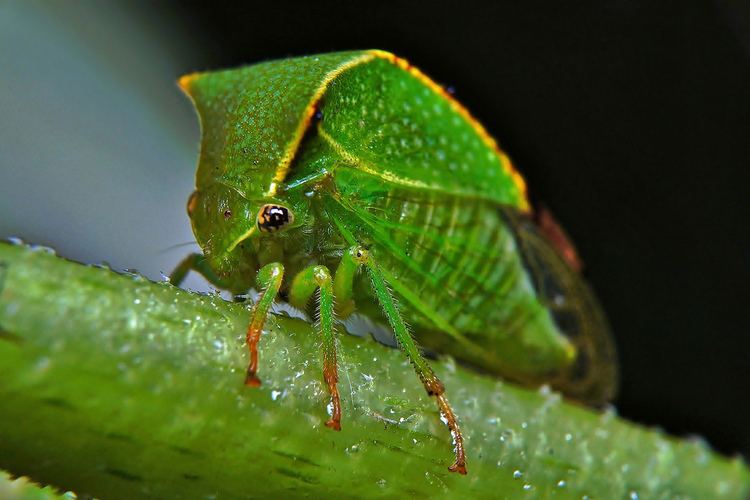
B ffelzikade buffalo treehopper
Appearance

Buffalo treehoppers are a bright green color and have a somewhat triangular shape that helps camouflage them so as to resemble thorns or a twiggy protuberance. It gets its name from the vague resemblance of its profile to that of an American bison. They grow to 6 to 8 millimeters (0.24 to 0.31 in) long and have transparent wings.
Life cycle
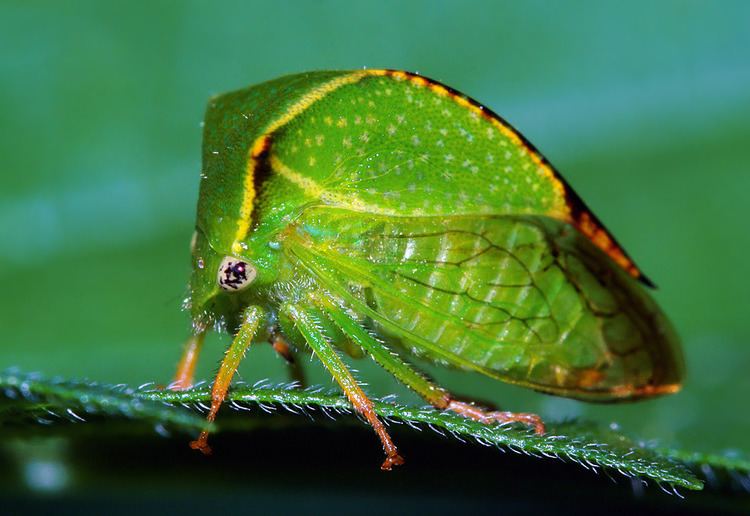
S. bisonia mates during the summer months. Males attract females with a song that, unlike similar songs used by cicada and crickets, are outside the sonic range audible to humans. Females lay eggs from July to October using a blade-like ovipositor. Up to a dozen eggs are laid in each slit made by the female.
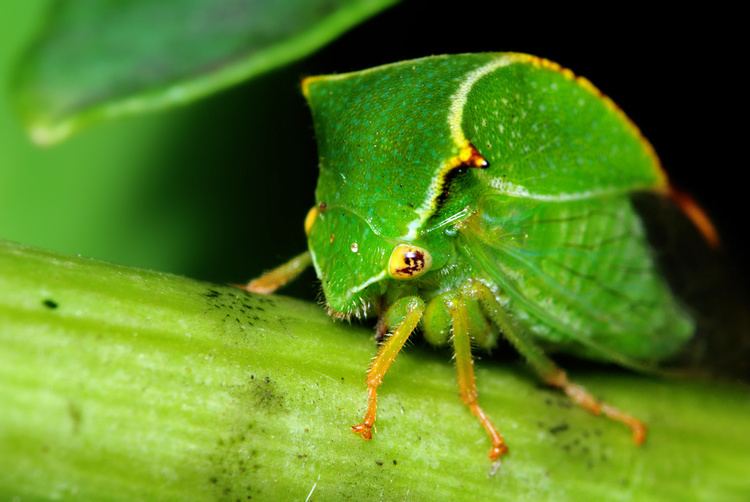
Nymphs emerge from the eggs the following May or June. The nymphs, which resemble wingless adults, but have a more spiny appearance, descend from the trees where they hatched to feed on grasses, weeds, and other nonwoody plants.
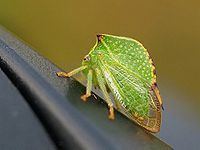
They molt several times in the following month and a half until they have reached adulthood. Then they return to the trees to continue their life cycle.
Feeding
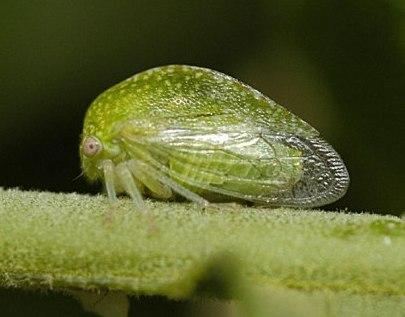
Both adult and immature buffalo treehoppers feed upon sap using specialized mouthparts suited for this purpose. Black locust, clover, elm, goldenrod, and willow are among their favorite food sources. It is also an occasional pest of fruit trees and is harmful to young orchard trees, especially apple trees. It has become an invasive species in some parts of Europe.
